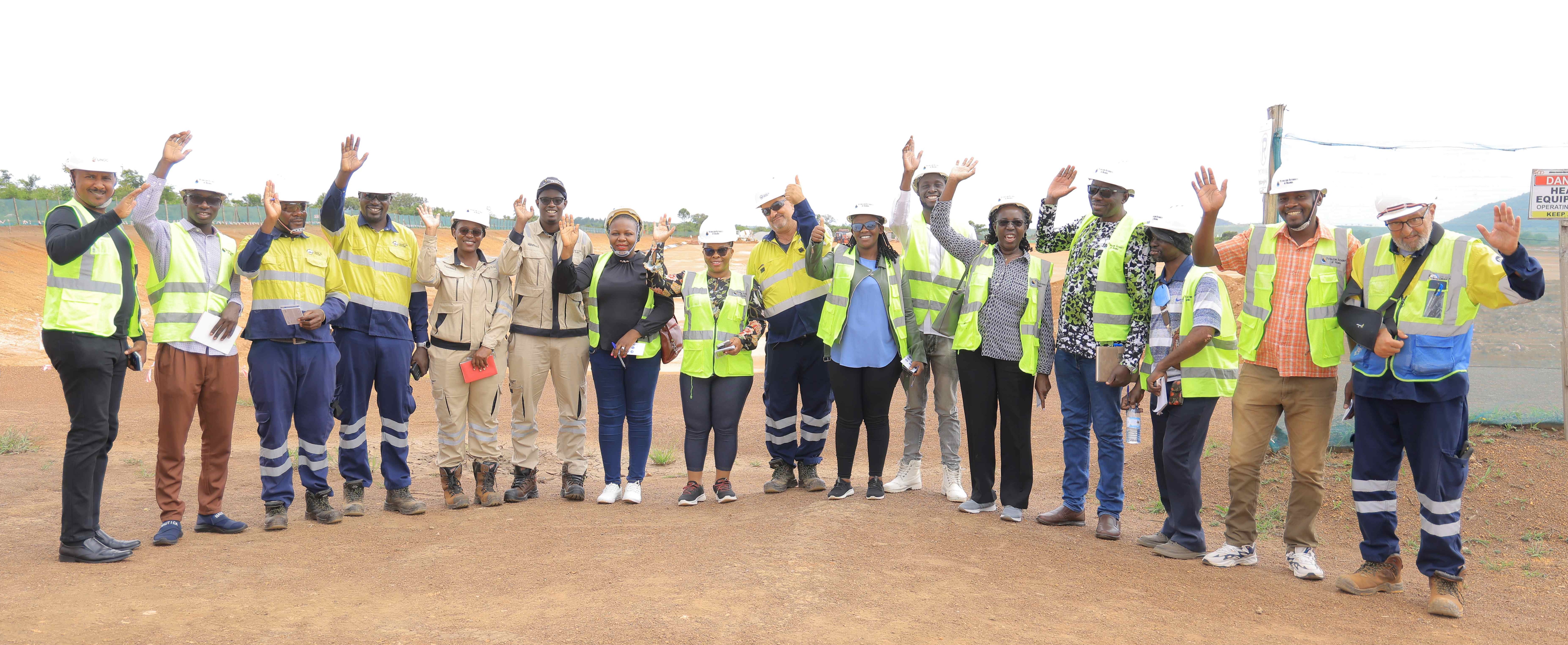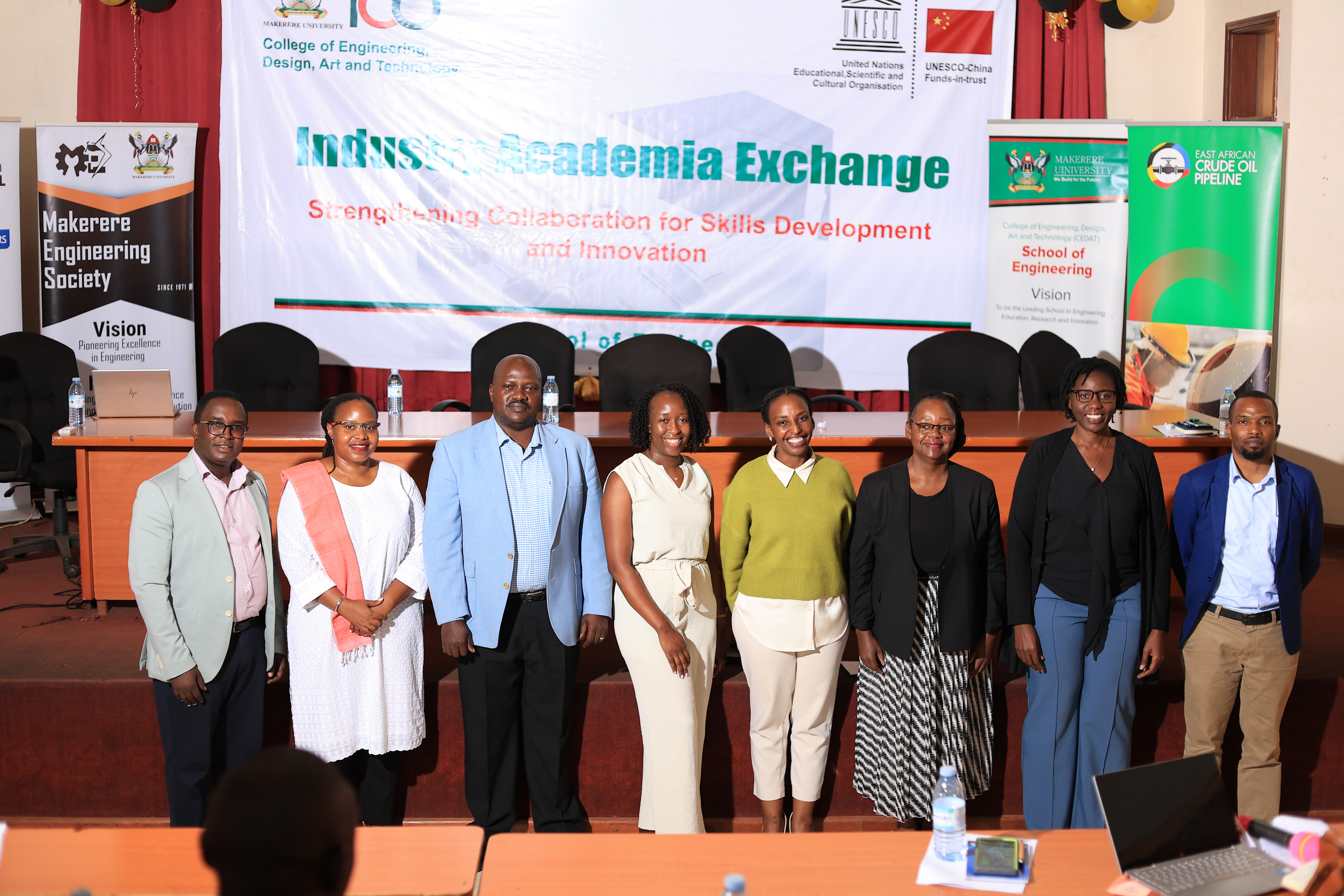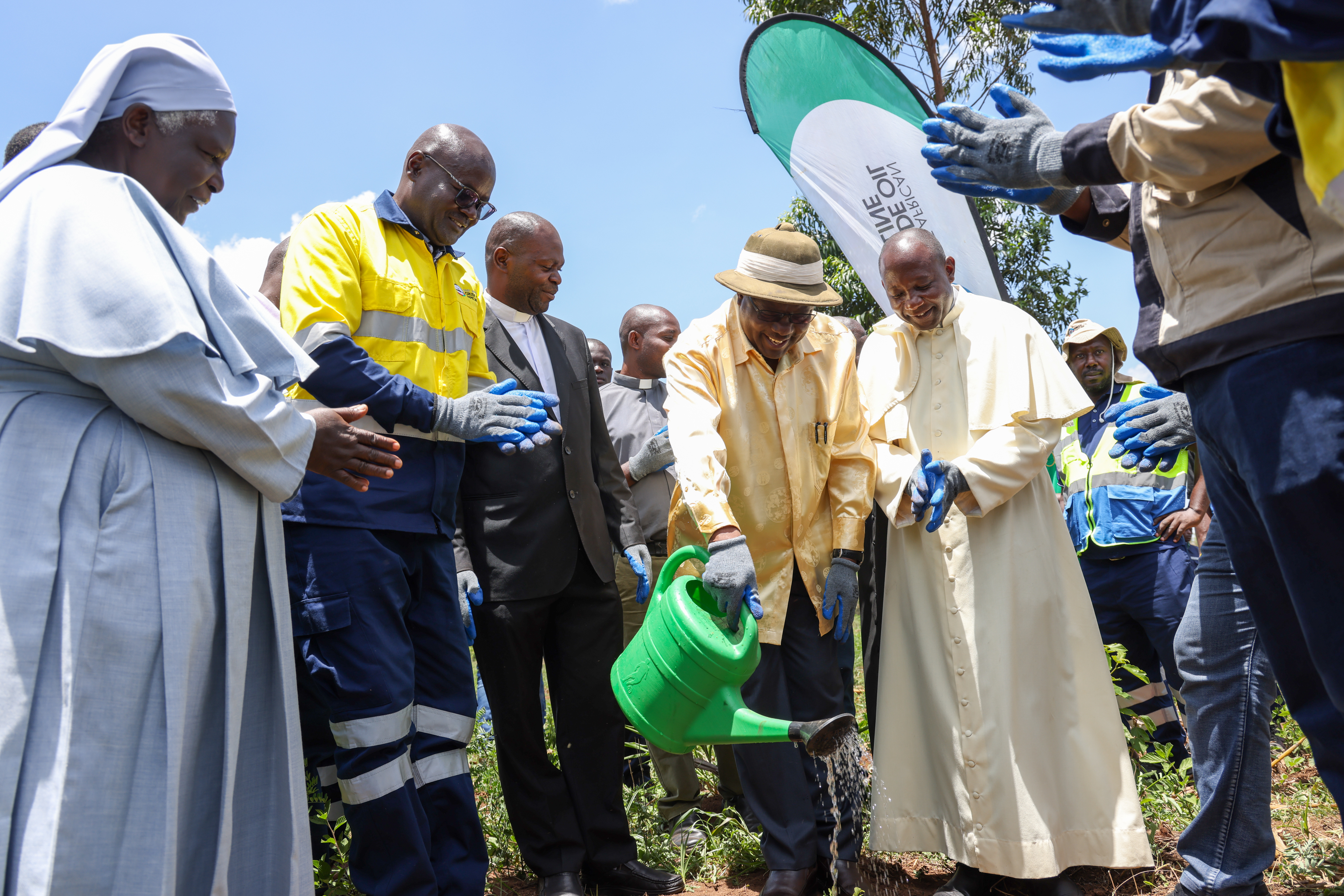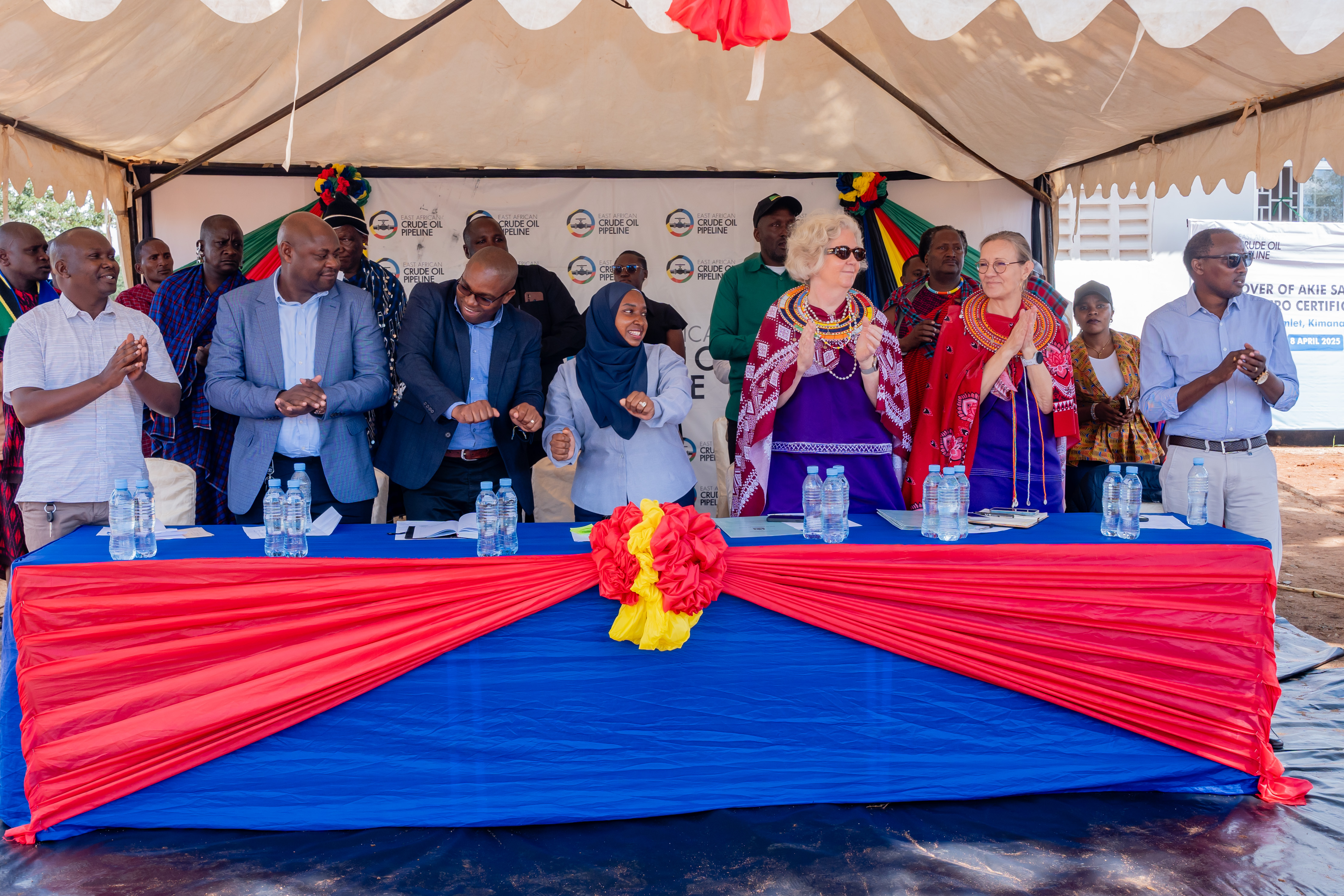On Wednesday 16th April 2025, the East African Crude Oil Pipeline (EACOP) Ltd participated in…

Ministry of Foreign Affairs Delegation Visits EACOP Pump Station 1
On 18th October 2024, a delegation from Uganda’s Ministry of Foreign Affairs, led by Ambassador Santa Mary Laker Kinyera, Head of the International Economic Cooperation (IEC) Department, visited Pump Station 1 (PS1) of the East African Crude Oil Pipeline (EACOP). This visit provided the Ministry’s team with an opportunity to witness firsthand the progress of the EACOP, which is crucial to the country’s growing energy sector.
The IEC Department plays a pivotal role in enhancing Uganda’s international trade and investment relations, and its interest in the EACOP project is a reflection of the government’s commitment to strengthening global partnerships and advancing Uganda’s position as a key player in the region’s energy market.
PS1, the starting point of the 1,443 km EACOP pipeline, is where the feeder lines from the Kingfisher and Tilenga oil fields converge. During the visit, the delegation was given a detailed tour of the site and observed critical elements of the pipeline construction, including welding and stringing operations. These activities are crucial to ensuring the integrity of the pipeline, which will transport crude oil from Uganda’s oil fields to Tanzania’s Tanga port.
The delegation was also briefed on the project’s engineering and sustainability efforts, particularly the innovative technologies being utilized to reduce the environmental impact of the pipeline.
Key Highlights Presented to the Delegation:
- Pump Stations and Pressure-Reducing Stations: The EACOP project includes six pump stations and two pressure-reducing stations along the pipeline’s route. These stations are essential for maintaining the flow and pressure of crude oil during its transportation from Uganda to Tanzania.
- Clean Energy Integration: In line with global environmental sustainability goals, three of the pump stations (PS1, PS2, and PS3) will be powered by hydroelectricity. This integration of clean energy will significantly reduce the carbon footprint of the project, reinforcing EACOP’s commitment to sustainable energy solutions.
- Pipeline Engineering: The pipeline is being laid 1.5 meters below the surface with a 30-meter-wide right-of-way corridor to ensure safety, efficiency, and minimal disruption to the surrounding environment. This strategic approach demonstrates EACOP’s focus on responsible engineering practices.
Ambassador Kinyera expressed her appreciation for the progress made on the EACOP project and commended the engineering team for their dedication to both technical excellence and environmental sustainability. She emphasized the importance of such large-scale projects in enhancing Uganda’s economic standing and facilitating stronger international partnerships through the IEC Department’s efforts.
The Ambassador also highlighted the significance of the clean energy measures incorporated into the project, noting that this aligns with Uganda’s broader vision for sustainable development and environmental conservation.


















